|
|
|
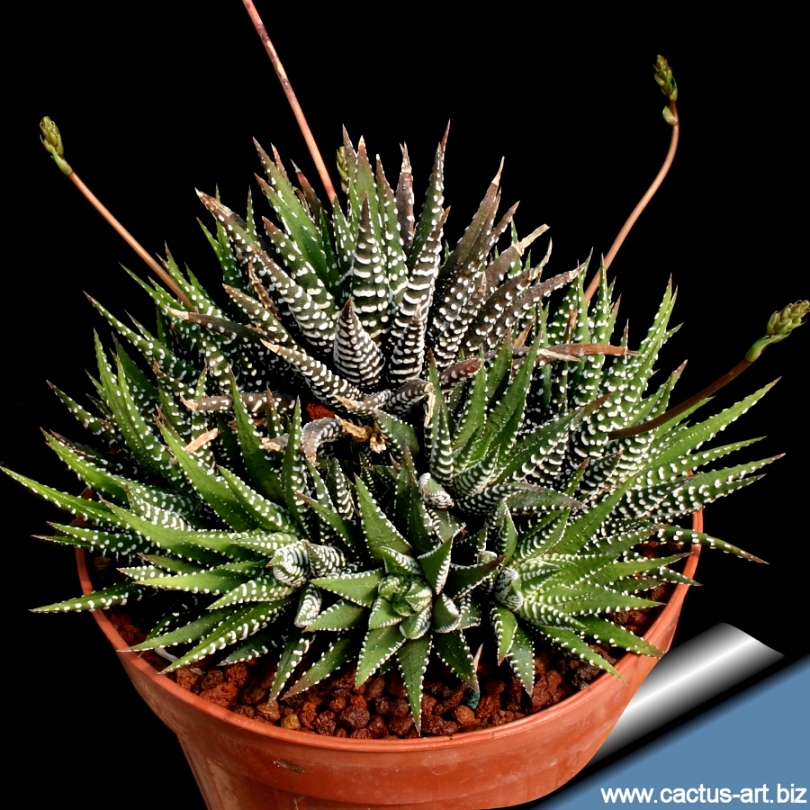
This is a striking plant with pointed
leaves banded
with white transversal stripes and spots that forms fast beautiful
clusters.
It is highly variable and offsets profusely
with several forms, variety and cultivars.
|
|
Description:
Stemless clustering perennial-succulent,
that eventually form large clumps.
Rosettes: 6-12cm diameter, 6-13(25) cm tall, heavily clumping.
Leaves: Dark green, pointed and strikingly banded or spotted with
white with varying
amounts of variegation. Tubercles are
"patterned" on the upper surface of the leaves. The lower surface of the
leaves have transverse bands of tubercles
Flowers: White-greenish keels.
Bloom time: Can be ever blooming if you snip off each bloom when
it dies.
Remarks: Haworthia attenuata-fasciata comes in many
varieties. This species vary from solid green with only few tiny white
bumps forms to heavily white horizontal banded forms, and also
individual clump that has broad, heavy horizontal stripes will sometimes
throw off a pup with just bumps, or some will be smoother, knobbier,
etc., and vice-versa.
|
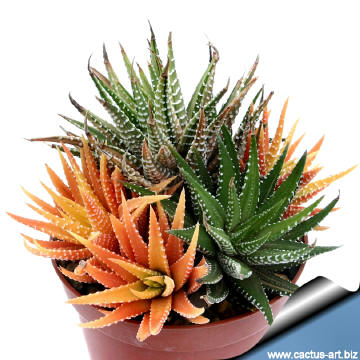 |
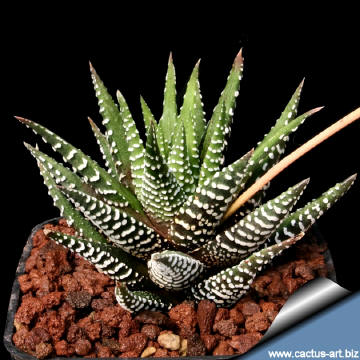 |
|
Variegated specimen are also frequently found in
cultivation.
Cultivation: Very easy to grow and common. Need regular water but
do not water again until dry. Also, it is a species that is dormant in
the winter and require very little water (maybe even none) during the
cold months.
Frost Tolerance: Light frost protection required. Minimum of
5ºC for safe growing (but hardy up to -5°C or less.)
Sun Exposure: Requires light shade to bright light (protect
from strong
midday sun). In shade the body colour will remain mostly green, while full sun will
darken it and give it red/brown body colour. Can be sunburned if moved
from shade/greenhouse into full sun too quickly. The amount of sunlight
it can withstand without scorching depends upon the how hot it becomes
in the summer in the locale in which it is planted. It will have more
colour if it receives more light. During the spring it may be able to
take full sun until the heat arrives at the end of spring. In an area
that has hot afternoon sun, it may be able to take full morning sun, but
requires afternoon shade or afternoon light shade.
Photo of conspecific taxa, varieties, forms and cultivars of
Haworthia attenuata.

 |
|
Advertising
|
|
|
|
Family:
Asphodelaceae (Aloacee - Liliaceae)
|
|
Scientific name:
Haworthia attenuata
(Haw.) Haw. var. attenuata
Origin:
South Africa (Eastern Cape) Alt: 0 - 1000 m.
Common Names include:
Zebra plant
|
Synonyms:
-
Aloe attenuata
Haw. (Basionym)
- Aloe
radula Ker Gawl.
-
Haworthia attenuata
(Haw.) Haw. forma britteniae
(Poelln.) M.B.Bayer
-
Haworthia attenuata
(Haw.) Haw. forma clariperla
(Haw.) M.B.Bayer
-
Haworthia attenuata
(Haw.) Haw.
var. britteniae
(Poelln.) Poelln.
-
Haworthia attenuata
(Haw.) Haw.
var. clariperla (Haw.) Baker
-
Haworthia attenuata
(Haw.) Haw.
var. deltoidea R.S.Farden
-
Haworthia attenuata
(Haw.) Haw. var. inusitata
R.S.Farden
-
Haworthia attenuata
(Haw.) Haw. var. linearis
R.S.Farden
-
Haworthia attenuata (Haw.)
Haw. var.
minissima R.S.Farden
-
Haworthia attenuata
(Haw.) Haw. var. odonoghueana
R.S.Farden
-
Haworthia attenuata (Haw.)
Haw. var. uitewaaliana
R.S.Farden
-
Haworthia britteniae Poelln.
-
Haworthia
clariperla Haw.
-
Haworthia fasciata
(Willd.) Haw.
var. caespitosa
A.Berger
-
Haworthia pumila
ssp. attenuata
-
Apicra attenuata,
|
|
|
|
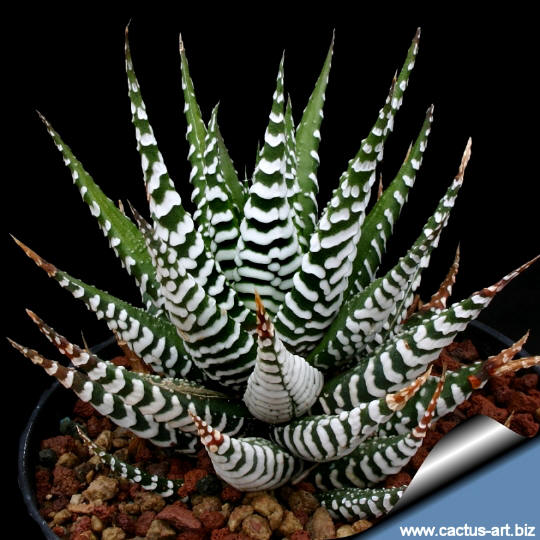
Haworthia attenuata
cv.
WIDE ZEBRA
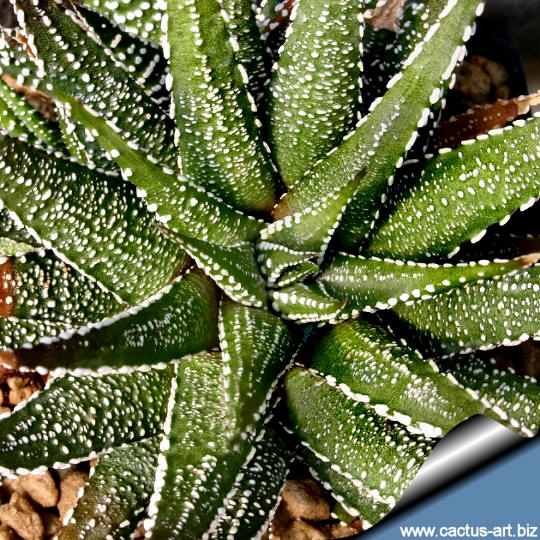
Haworthia attenuata
var. clariperla
Propagation: Seeds or (usually) offsets that appear at the
base between the
leaves; leave them
attached to form a cluster, or wait until they are 1/3 the size of the
parent and then detach and plant.
|
|